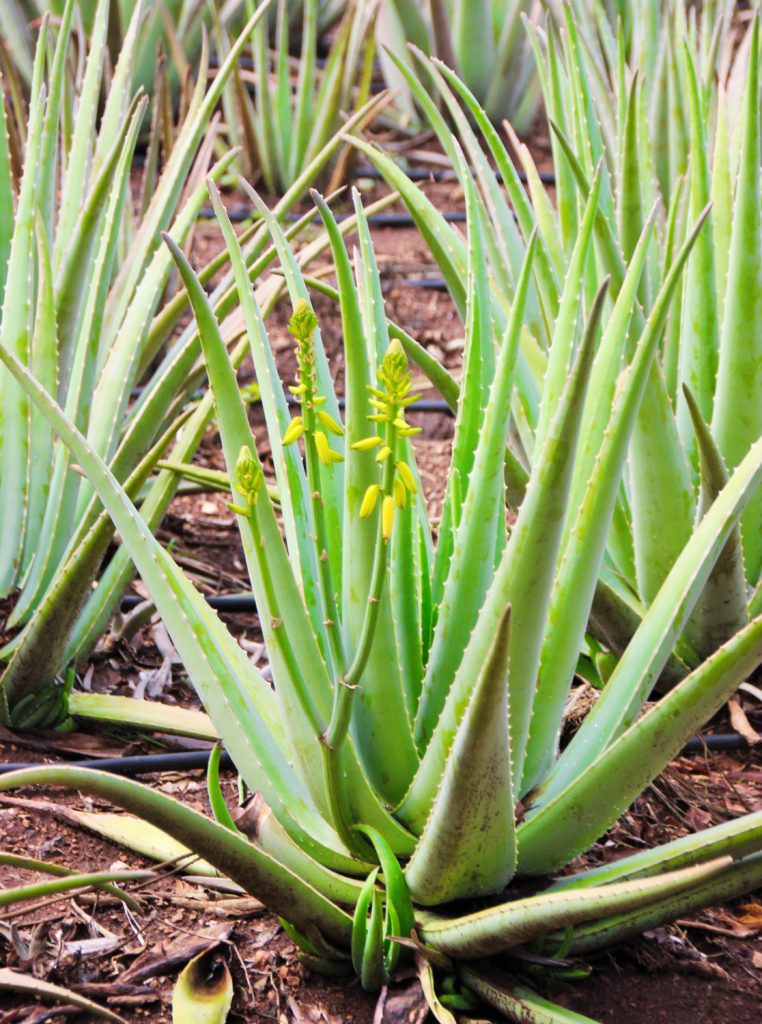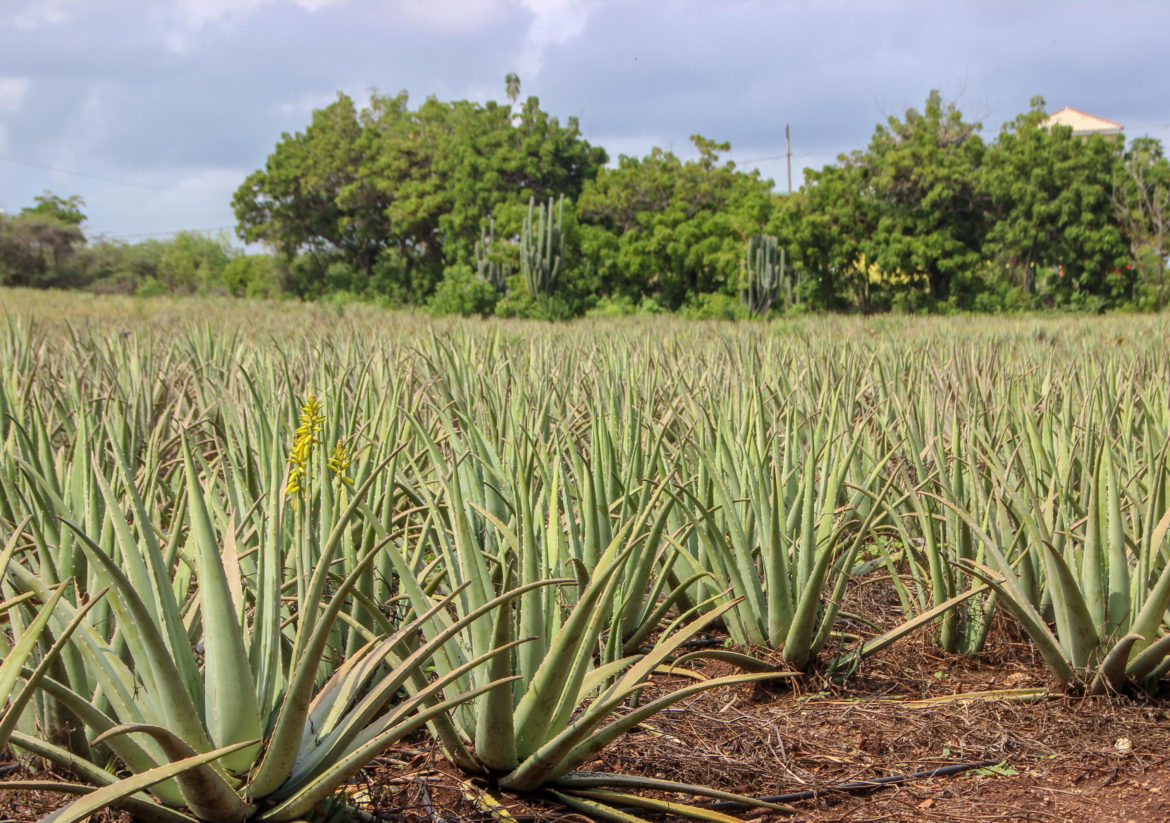Curacao’s Curaloe Aloe Vera Plantation offers sustainable ecotourism. When travelling in the southern Caribbean islands, Aruba and Curacao, one can easily lose themselves in the Trade Winds that take you to the beautiful blue beaches. However, there’s also, centered in both islands’ arid landscapes, Aloe Vera plantations to explore. As an Acupuncturist & Herbalist, I’m passionate about herbal medicine and Aloe Vera’s healing properties. So, I visited Curaloe and love sharing what I learned at this holistic plantation.
Curacao’s Sustainable Curaloe Aloe Vera Plantation Tours
In my travels, I love discovering sustainable companies that promote health for people and our planet. Overall, Curaloe upholds these principles as a 12-acre organic plantation with manual harvesting and weeding. Also, it has Dutch engineering, including solar power and the stabilization process to ensure a high-quality end product. Aloe leaves process within 2 hours of harvesting to preserve the bioactive components. Most importantly, Curaloe cultivates over 100,000 specimens of the Aloe Vera plants. Furthermore, it creates high-quality products, that contain a high concentration of Aloe Vera as the first ingredient listed on labels. Also, its sister company is in South Africa.
My travels to the plantation piqued my interests to delve into the history and healing benefits of Aloe Vera. Native to Africa, the earliest known record of Aloe Vera is in Egypt on their temple walls, hailed as the “Plant of Immortality.” It spread to Greece by Alexander the Great and on to China, probably through the Silk Road. Afterwards, it became a part of the renowned Chinese Materia Medica, calling it “The Method of Harmony.” Native Americans called it the “Wand of Heaven.” The Dutch brought Aloe Vera to Curacao around 1600, proliferating this medicine throughout the Caribbean.
Aloe Vera & Health Benefits

What makes this herb so unique for its healing properties? First and foremost, the answer lies in its high number of nutrients with 75 bio-active components, such as, vitamins A, C, E, B-1,2,3,6,12, folic acid and choline. Aloe Vera is also rich in minerals, for example, calcium, magnesium, zinc, chromium, selenium, sodium, iron, potassium, copper and manganese. Amino acids are also abundants, such as, isoleucine, leucine, lysine, methionine, phenylalanine, threonine, valine, and tryptophan. Finally, the enzymes include amylase, bradykinase, catalase, cellulase, lipase, carboxypeptidase, oxidase, creatine phosphokinase, and proteolytiase.
Aloe vera gel is the leaf pulp–the thin, clear, jelly-like substance that makes up the inner portion of the leaves. Aloe juice is a bitter yellow liquid, extracted from just inside the leaves. Both the gel and juice are used externally for skin discomforts and internally as a laxative. According to the Chinese Materia Medica, aloe is bitter in flavor and cold in properties and goes to meridians of liver and large intestine. Its main indications are purgation, removing heat from the liver, and killing parasites. Aloe vera gel uses include constipation caused by heat accumulation, headache due to liver-fire, bloodshot eyes, parasites causing abdominal pain, scabies and hemorrhoids.
In modern times, Aloe Vera’s healing spectrum has dramatically expanded.
For example, a component of the aloe vera, aloe-emodin, has shown to inhibit the skin cancer cell proliferation process. Aloe has also shown to regulate blood sugar of diabetics. Overall, it also can reduce inflammation in arthritic individuals due to its anti-inflammatory properties.
Interestingly, glucosamine is a component of aloe and cartilage, known for its treatment of arthritis. Aloe has also shown to be beneficial for asthma, with its anti-inflammatory properties and as a natural steroid. Aloe’s benefits for digestion and constipation, along with its properties to detoxify the liver, make it helpful to lose weight and detox the body. Overall, as a skin panacea, its anti-inflammatory powers treats first-and second-degree burns, sunburns, wounds, acne, eczema, psoriasis, poison ivy or oak and itching.
Modern research is finding also that aloe is effective for dental issues due to its antiseptic, antibacterial, antiviral and anti-fungal properties. It is effective as a mouthwash to treat periodontal disease and gingivitis. It accelerates healing and recovery for mouth sores, ulcers and herpes.
Aloe Vera Benefits for Skincare & Beauty
The benefits of Aloe for the skin and beauty go back to the ancient times of Cleopatra in Egypt. Overall, this anti-aging powerhouse contains the antioxidants, vitamins C & E. Other antioxidants are the vitamins, phenolic compounds and peroxidases. In addition, aloe activates the enzymes that naturally resolve free radicals, such as, glutathione and superoxide dismutase. Also, its component of vitamin E helps to protect skin from UV radiation with moisturizing and anti-inflammatory properties. The vitamin C stimulates the collagen production and decreases premature aging of skin.
Most importantly, here’s what to look for in choosing a high-quality aloe product is vital to ensure you are investing in a pure product. Firstly, make sure the aloe is one of the first ingredients listed on the label and it’s organically sealed. In addition, look for a manufacturing process that uses stabilization, not boiling or pasteurization.
Read More!
Curacao’s Den Paradera – Native Herbal Medicine Garden Tour
Aruba Beaches & Highlights – A Dutch Caribbean Paradise





